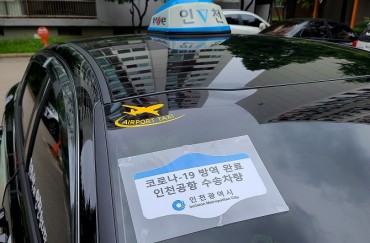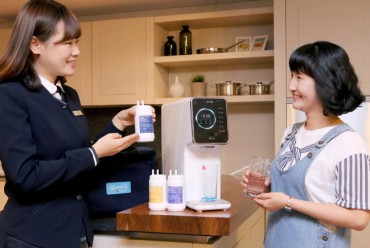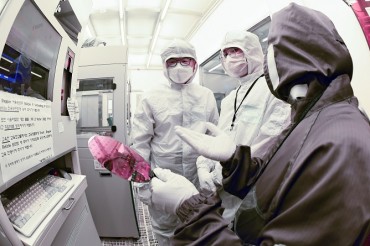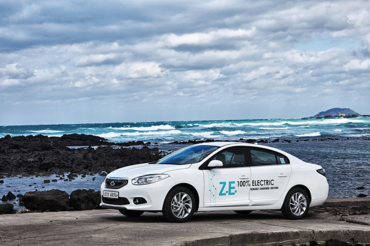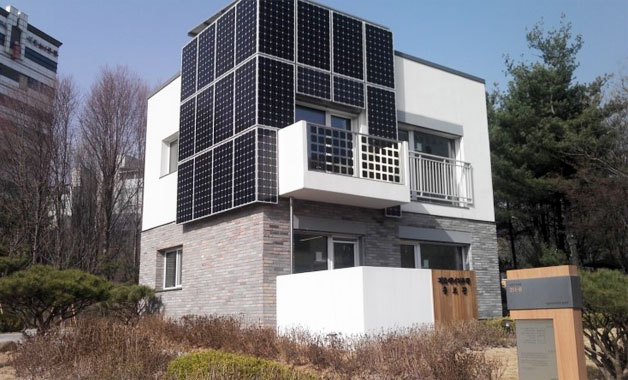
Seoul, home to a population of around 10 million, has one of the local governments spearheading the household solar power drive under the campaign of reducing the number of nuclear power plants in South Korea. (image: Seoul Metropolitan Government)
SEOUL, Sept. 17 (Korea Bizwire) – Sunny days might be everyone’s favorite but there is an extra reason for Kim Jin-woo, a 38-year-old living in the western district of Seodaemun, to be happy about sunlight all day long: It helps ease his electricity bills by producing power at his apartment.
Since installing a single solar panel months ago outside the veranda of his apartment, the newly-wed said checking how much power it is creating has become a pleasant everyday routine.
“I decided to install it as Seoul (metropolitan government) covers half the cost through a subsidy program and it can produce electricity that will reduce the overall electricity bills in the process,” he said, asking to be identified by an alias.
“It has become a pleasant habit for me to check the monitor attached to the device and see how much electricity is being made. It is not a huge amount of power and might not be a big relief from electricity bills but I am still happy about it.”
Kim is one of a small but steadily growing number of people establishing their own small solar power generators at home, which used to be a luxury up until a few years ago as they needed a large space for installation and it cost too much money and time for just a small amount of electricity.
Household solar panels are nothing new and have been available for many years but the hurdles for wider use were the high cost, bulky size and low efficiency, which was not enough to coax people into installing them at their homes at first.
Things, however, seem to be changing as solar panels are becoming smaller, more affordable, more efficient and easier to install and remove than in the past.
“It takes one or two hours to install the device, which is a far cry from the past when it took days. All this is possible thanks to panels getting smaller and efficiency getting better,” said Hwang Min-a, an official at Microps, which specializes in mini solar panel devices.
A solar panel, the smallest unit of the power generating device, consists of two major elements — modules that generate power from sunlight and an inverter that turns DC into AC that can be used in home electronic appliances. Just plug it into a nearby power socket and generated power flows into home appliances.
It depends on the product purchased but usually a solar panel can produce up to 260 watt, enough to operate a large refrigerator, every day. Given that a household consumes a monthly average of 316 kWh, a solar power panel could reduce electricity bills by 92,000 won (US$77.8) annually, some estimates showed.
This might be a drop in the bucket given the ever-rising household electricity consumption and power bills, but encouraging signs are being detected here and there as people are becoming more interested in green energy that is cleaner, safer and even cheaper than other sources.
Behind the fledgling move toward household solar power generation are municipal governments, district offices and even some energy-conscious individuals who have found the usually ignored and unattended space, such as outside apartment verandas, as the right place to start.
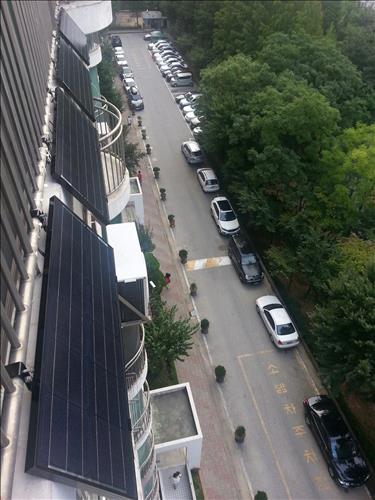
This photo shows solar power panels installed outside the window of an apartment located in Seoul. (Image: Seoul Metropolitan Government)
Seoul, home to a population of around 10 million, has one of the local governments spearheading the household solar power drive under the campaign of reducing the number of nuclear power plants in South Korea.
For this year, the municipal government set aside 3.2 billion won for a subsidy program, under which it pays half of the installment cost of around 700,000 won.
The subsidy program has been in place since 2014 and last year over 1,800 households benefited from it by installing solar panels. The figure is expected to rise well above that level this year, city officials said.
Promotion still remains a stumbling block with not many people knowing that solar power is available at cheaper prices. Nor do they fully understand that it is not just for electricity bills but for the sake of a broader cause like saving energy and chipping in to protect the environment.
Heeding the need for a perception change, the city government has changed its promotion slogan from “saving on electricity bills” to “generating power by yourself,” emphasizing the importance of energy self-reliance and possible individual contribution to the global environment.
“Last year, we started with the slogan focus placed on saving on electricity bills, but it seems to have failed to make an appeal to many people,” said Park Gyoung-suk, an official at Seoul’s green energy department.
“We are pushing for a perception change this year by emphasizing that household solar panels can help them generate power by themselves,” the official added. She emphasized that Seoul is ramping up promotion for solar power by distributing commercials through diverse channels including the subway.
District offices closer to citizens and their communities are also pushing to make household solar panels available to a wide range of people by providing subsidies and ambitious blueprints for green energy.
A growing number of residents in some districts including Geumcheon, Guro and Nowon are joining the move by installing solar panels in groups.
In particular, Nowon, located in the northern part of Seoul, earlier vowed to build such mini solar panels for 33,000 households this year in hopes that it could turn the district into a green energy-oriented area.
Joint efforts between residents and energy-conscious civic groups are also underway.
Recently, a cooperative consisting of about 250 residents and civic group officials built solar panels that can produce 36,000 kilowatt per year in Guro, west of Seoul.
Experts agree that this is by no means a success at a time when the portion of solar power in the total electricity production remains quite low.
Industry data showed that solar power accounts for a mere 1 percent of global electricity generation and the same is true for South Korea., indicating that it has a long way to go before power from sunlight will become a major source of energy.
The low penetration, however, could mean that it has much room for growth.
And the latest trend starting from apartments and communities augments the hopes that a meaningful change in perception is underway: People do not want solar power just to cut down electricity bills but also to join the effort to leave a better world for their children.
Some see solar power at home as a “cool” thing to do.
“Regardless of how much money I could save from this device, it’s cool to think that I am contributing somewhat to the environment by generating power at home without emitting any greenhouse gases in the process,” the 38-year-old Kim said.
(Yonhap)



